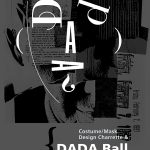Disfluency: The Art of Making Things Difficult
 Speech disfluencies are any of various breaks, irregularities, or utterances that are often not consistent with any specific grammatical construction and occur within the flow of otherwise fluent speech. These include, for example, words and sentences that are cut off mid-utterance, phrases that are restarted or repeated, repeated syllables, grunts or unrecognizable utterances occurring as “fillers”, and “repaired” utterances.
Speech disfluencies are any of various breaks, irregularities, or utterances that are often not consistent with any specific grammatical construction and occur within the flow of otherwise fluent speech. These include, for example, words and sentences that are cut off mid-utterance, phrases that are restarted or repeated, repeated syllables, grunts or unrecognizable utterances occurring as “fillers”, and “repaired” utterances.
In short, disfluency is a break in an otherwise consistent grammatical flow and, as such, is not desirable.
But how about visual disfluency?
Visual disfluency is a break or interruption in a visual flow of elements. It is the accidental or intentional obfuscation of information, usually text, that can often inhibit legibility. Normally, for designers trained to create materials that aid clarity, disfluency would be considered undesirable. Typography, at its best, should be clean and simple so that the message, and not the form, is communicated. Making something less visible and more difficult to read would seem to be the antithesis of the designer’s job. But that is not true.
In a recent study at Princeton University, students were asked to recall facts from a text that they were given a few minutes before. For some subjects, the text was set in an easy-to-read font but for others, the text was set in fonts that were more challenging. The results showed that the students had better retention of information from the text set in the difficult to read font. While further study will need to be done, the initial theory put forth is that the more challenging font slowed down reading so that students spent more time having to focus on each word as they read. The amount of time per word was a just an instant but proved that this instant lead to greater retention of information.
In other words, making the text harder to read (disfluency) made it easier to remember.




